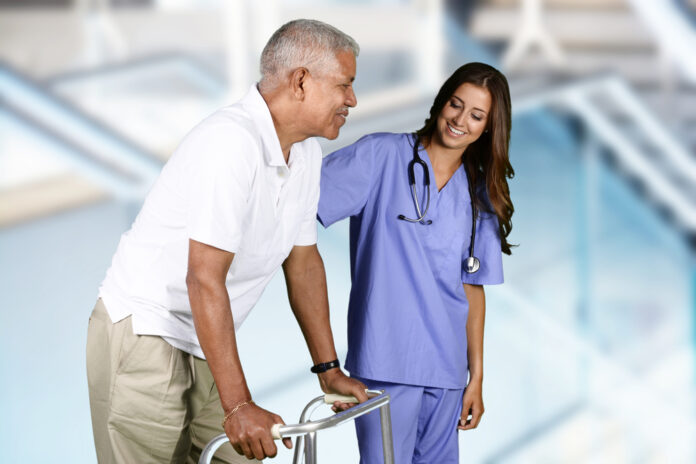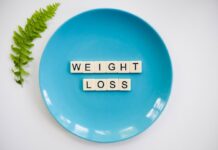Quick treatment is essential in stroke patients; once in the hospital, they will be given medication to break up the blood clot and insulin if they have diabetes. After stabilization, it’s critical to begin recovery treatment. With active rehabilitation, survivors can return half of the lost functions.
What Is a Stroke?
A stroke happens when there is a sudden interruption in the brain’s blood supply. Following a stroke, brain cells begin to die in minutes, so it’s critical to seek immediate treatment to prevent possible disability.
Think FAST if you notice any symptoms of a stroke:
- Facial drooping- Ask the person to smile and see if one side of their face droops.
- Arm weakness- Ask them to raise both arms and see if one drifts downwards.
- Speech difficulties- Ask them to say a simple phrase and listen for slurred speech.
- Time- Every minute is critical. Call 911 as soon as possible!
To help the public quickly recognize stroke symptoms, the American Stroke Association, the American Heart Association, and more have been educating individuals on FAST recognition.
What Does Stroke Rehabilitation Involve?
Stroke rehabilitation aids patients in relearning skills that are lost from brain damage. It also protects them from developing additional medical problems, including pneumonia, injury from falling, or clot formations.
Rehabilitation programs are unique to each patient depending on the type of stroke, needs, and disability level. For example, brain stem stroke rehabilitation requires more physical therapy because motor skills travel through the brain stem.
Physical Therapy Stroke Rehabilitation
A patient’s physical therapy program starts quickly after the stroke. Physical therapy aims to help patients relearn movement skills lost when part of the brain was damaged. It provides a treatment that restores the patient’s ability to walk, sit, stand, lay down, and perform other functions.
Speech Therapy Stroke Rehabilitation
One in three stroke survivors loses critical speech skills. Speech therapy stroke rehabilitation helps patients recover their language skills. Speech therapy is a slow and challenging process; however, most see significant improvements with persistence.
The loss of speech skills depends on the stroke’s location. For example, a stroke in the right side of the brain significantly impacts speech, requiring more speech therapy than brain stem stroke rehabilitation.
Cognitive and Emotional Stroke Rehabilitation
Cognitive and emotional therapy helps patients and their families cope with post-stroke emotions. A therapist will use various psychological models such as Behavior therapy, Cognitive Behavior therapy, and Psychotherapy depending on the patient.
In cognitive and emotional stroke rehabilitation, therapists emphasize the patient’s strengths, clarify concerns, and teach them methods to manage distress.
Occupational Therapy
Occupational stroke rehabilitation addresses a patient’s physical, cognitive, and mental challenges. It helps stroke survivors regain the ability to engage in activities by using various occupational activities.
Occupational therapists recommend equipment that will help the patient engage in tasks, evaluate their home for safety hazards, and provide rehabilitative activities the patient can do independently.
The Golden Period of Stroke Rehabilitation
Stroke rehabilitation begins in the hospital once the patient’s condition is stabilized. The first 90 days of recovery are the golden period of stroke rehabilitation. The golden period is critical for complete restoration since most neurological recovery occurs during this time.
What Specialists Are Involved in Stroke Rehabilitation?
Neurologists
Neurologists manage stroke-intensive care teams while the patient is hospitalized. They identify the type and severity of a stroke and possible causes. Neurologists can also recommend treatments and interventions (medication, surgery, therapy, and lifestyle changes) to aid in recovery and prevent future strokes.
Primary Care Physicians
A primary care physician coordinates a patient’s long-term care following a stroke. They monitor the patient’s health through regular checkups and advise them on how to prevent future strokes. Physicians can also refer patients to different rehabilitation programs depending on their needs.
Rehabilitation Nurses
Rehabilitation nurses help stroke survivors relearn how to manage their care and perform necessary daily living activities independently. These nurses also work with survivors to address health concerns such as diabetes and high blood pressure that can cause another stroke.
Physical Therapists
Physical therapists are trained in anatomy and physiology, enabling them to evaluate the stroke patient and design the best rehabilitation program to support physical recovery. They help patients regain their stamina, strength, and balance and improve function in their legs and arms that they lost during a stroke.
Occupational Therapists
Occupational therapists help stroke survivors relearn the motor skills necessary to regain their independence and perform daily life activities. Motor skills needed for cleaning, eating, brushing teeth, and more are regained through occupational therapy. They may also recommend changes in the patient’s home to improve safety and aid in physical functioning.
Speech Therapists
Speech therapists help survivors to relearn the speech and language skills that they lost. Speech therapy for stroke patients involves improving speech, writing, understanding words, language skills, and developing other ways to communicate. Survivors who regularly work with a speech therapist have greater chances of recovering their speaking skills. Here you will find the most knowledgeable therapists and the best rehabilitation options.
Final Thoughts
Outpatient Stroke Rehabilitation Techniques
Outpatient stroke rehabilitation is an excellent option for stroke survivors who don’t require intensive medical care. Occupational therapy, physical therapy, cognitive therapy, and speech therapy can be completed through outpatient programs.
Outpatient therapy allows the patients to continue their daily lives while attending rehabilitation sessions. Outpatients can recover from their home’s comfort, spend more time with loved ones during recovery, and avoid many medical expenses.
The Results of Rehabilitation After a Stroke
Rehabilitation is essential for stroke survivors to relearn the skills lost due to brain damage. Stroke rehabilitation helps survivors regain their independence and improve their quality of life following a stroke.
Find a Home-Based Business to Start-Up >>> Hundreds of Business Listings.
















































